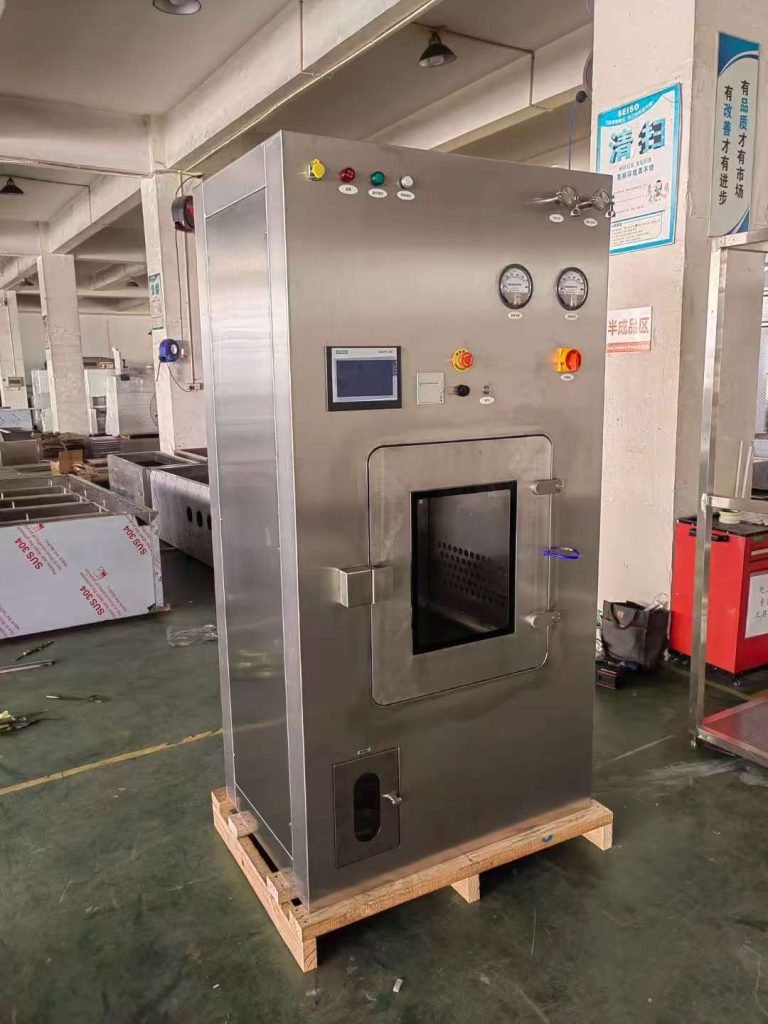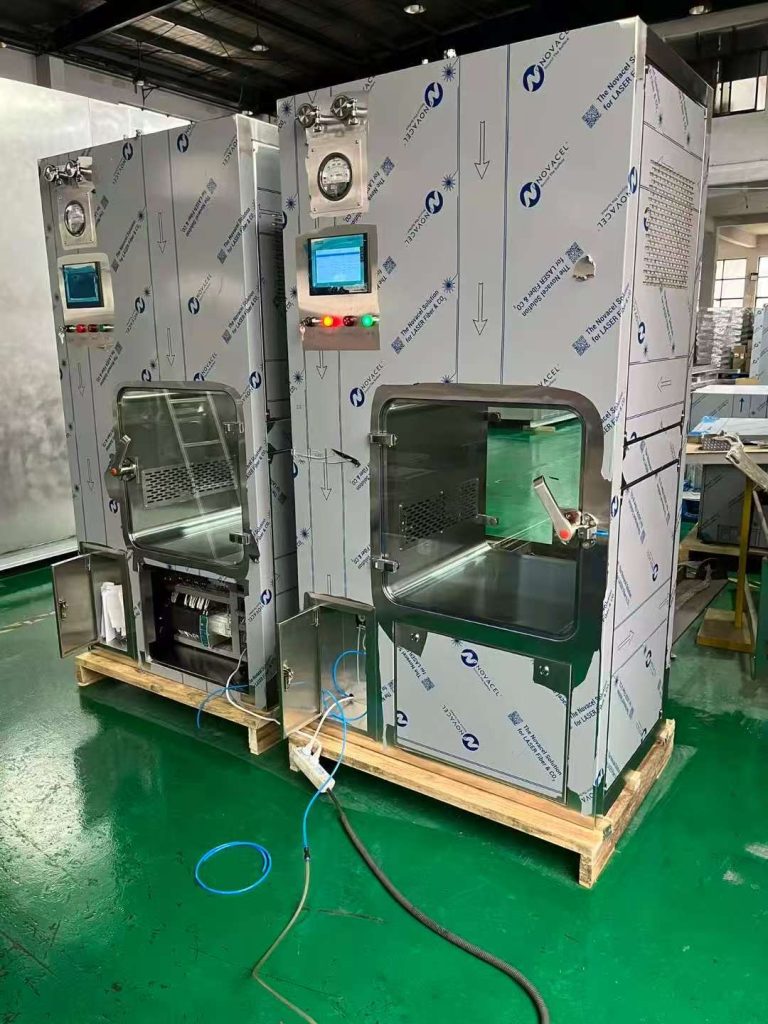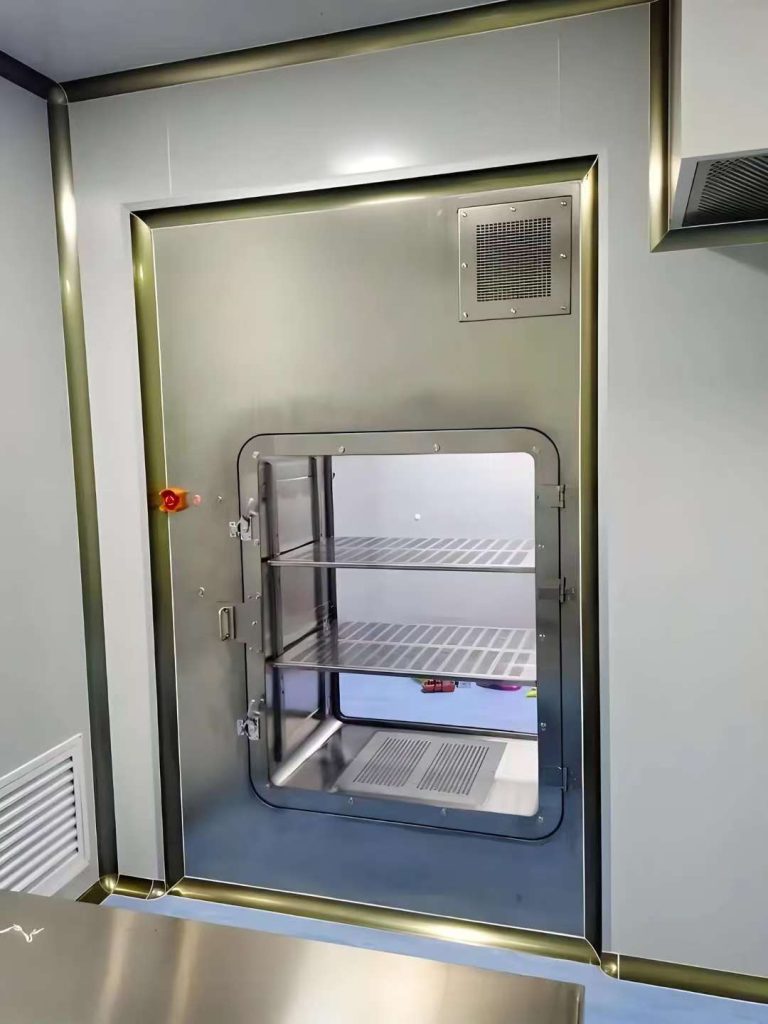Boben | Global Leader in Cleanroom Equipment& HEPA Filtration
Boben | Global Leader in Cleanroom Equipment& HEPA Filtration
Since the 2010 GMP revision, with stricter sterilization requirements, all materials entering Class B areas must be sterilized. However, traditional moist heat and dry heat sterilizers both have the disadvantage of high-temperature sterilization. Some products that cannot be sterilized at high temperatures can only be sterilized using a low-temperature pass-box. Therefore, the VHP vaporized hydrogen peroxide pass-box was developed.



VHP sterilization transfer windows are suitable for sterilizing the surfaces of various items being transferred without leaving residue, making them ideal for transferring items between cleanrooms of varying levels. In 2012, with the rapid adoption of vaporized peroxide (VHP) transfer windows in China, an estimated 100 pharmaceutical companies have achieved new GMP certification for their VHP transfer windows.
Although VHP pass boxes are a mature sterilization transfer solution for today’s pharmaceutical companies, they still have several unavoidable shortcomings:
Is there a hydrogen peroxide transfer window that can achieve a 6-log sterilization effect against Bacillus stearothermophilus, while shortening the sterilization cycle without increasing the temperature? And without requiring such a high concentration of hydrogen peroxide solution, could this help companies facing urgent time and challenges?
To address the aforementioned drawbacks of VHP transfer honey, let’s first analyze the existing technical difficulties.
Why does the sterilization cycle of a VHP transfer window take so long? Let’s analyze the time distribution of the entire sterilization cycle. The sterilization cycle of a VHP transfer window consists of four steps: dehumidification, conditioning, sterilization, and ventilation. Taking a 3m³ VHP transfer chamber as an example, dehumidification takes approximately 10 minutes; conditioning: approximately 10 minutes; sterilization: approximately 40 minutes; and ventilation: approximately 1.5 to 2 hours (to reduce the concentration to below 1ppm). The total time is 2.5-3 hours.
Why does the sterilization cycle of a VHP transfer window take so long? Let’s analyze the time distribution of the entire sterilization cycle. The sterilization cycle of a VHP transfer window consists of four steps: dehumidification, conditioning, sterilization, and ventilation. Taking a 3m³ VHP transfer chamber as an example, dehumidification takes approximately 10 minutes; conditioning: approximately 10 minutes; sterilization: approximately 40 minutes; and ventilation: approximately 1.5 to 2 hours (to reduce the concentration to below 1 ppm). This totals 2.5 to 3 hours.
It can be seen that the ventilation phase accounts for two-thirds of the entire sterilization cycle time. Why does the ventilation take so long? Based on experiments, the technical department of Anpal Technology Co., Ltd. speculates that the main reasons are the following:
Many companies internationally are currently seeking to speed up the removal of residual hydrogen peroxide. For example, Metall Plastic Germany has improved its vaporization nozzles and catalysts, but the best results achieved are only a reduction of H₂O₂ to 0.5 PPM in a 5m³ space within 1.5 hours. Bioquell in the UK has devised a method to decompose hydrogen peroxide by spraying a catalase solution. However, because the enzyme is a protein, if it is not completely removed from the microorganisms, it becomes a nutrient for them. Therefore, the catalase solution method is not feasible.